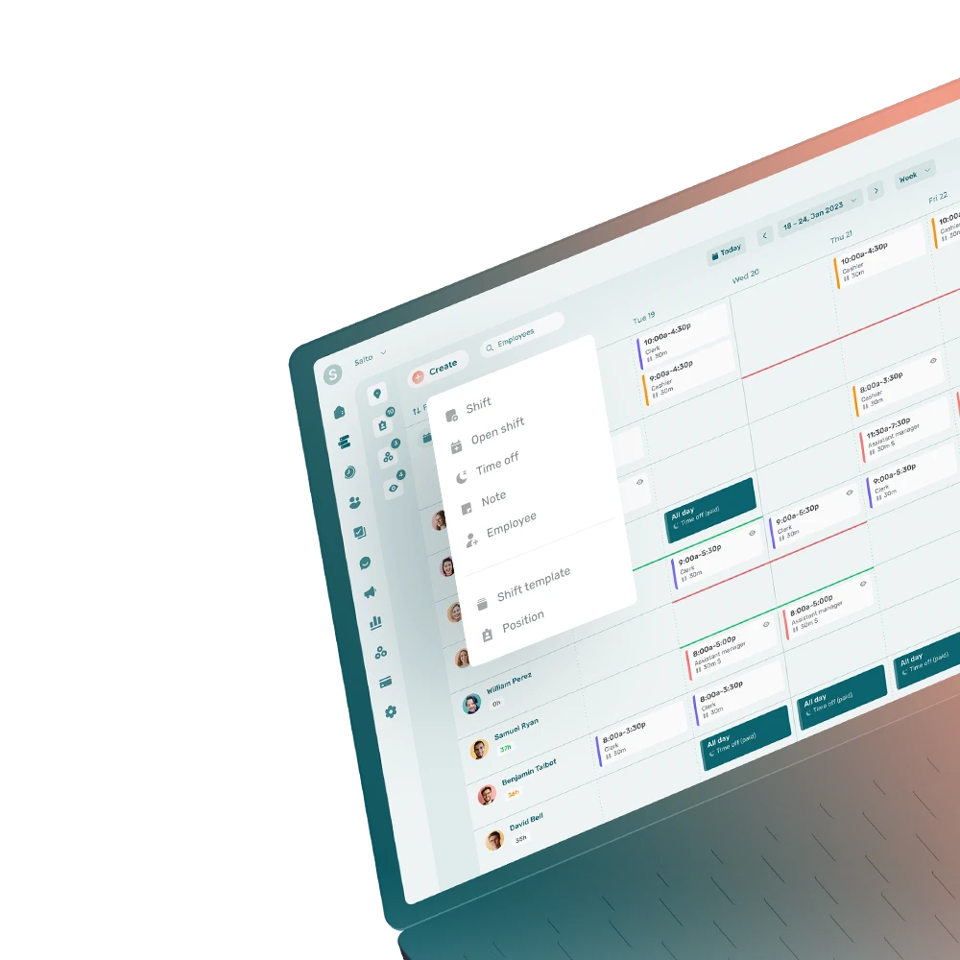A performance evaluation, also known as an employee performance review, refers to a formal meeting intended to assess the quality of an employee’s work and whether they are reaching their targets.
Why Conduct a Performance Evaluation?
A performance evaluation is an important staff management technique. It provides employees with feedback to help them better understand their strengths and weaknesses, and know what objectives they should reach as part of their responsibilities.
It also allows employees to ask their managers questions and offer feedback on various subjects.
Performance evaluations help managers resolve conflicts before they get out of hand. They are also good opportunities to thank or congratulate employees, and highlight their good work.
What Should Be in a Performance Evaluation?
A performance evaluation usually includes:
- A summary of the employee’s attendance: number of approved absences, number of unjustified absences, days of paid leave taken, etc.
- A review of progress on objectives
- A review of the attitude and conduct of the employee in the workplace and in the context of their responsibilities
- The strengths and weaknesses of the employee
- The next objectives to be reached
- Potential for career development
- Possibilities for professional skills development
- Constructive feedback
- A salary review
How to Evaluate an Employee’s Performance?
Managers who wish to evaluate the performance of their employees can:
- Provide feedback to their employees throughout the year
- Take notes on employee performance regularly to provide a complete, in-depth analysis
- Be transparent and honest with their employees during the evaluation meeting
- Candidly share their expectations with employees
- Carry out the evaluation in person in a private area
- Give concrete examples so the employee can improve
- Offer positive feedback to avoid harming the employee’s motivation
- Pay attention to their language and non-verbal communication during the meeting
How to Evaluate an Employee’s Performance?
Managers who wish to evaluate the performance of their employees must take regular notes about their work.
Managers must base performance reviews on concrete examples. They should also try to remain as neutral as possible in their evaluation and provide objective feedback to allow employees to improve.
They can also use an annual evaluation interview template to review employee performance.
What Are the Steps of a Performance Evaluation?
A performance evaluation usually has four steps:
- Planning of objectives: setting out what is expected of the employee and their responsibilities, so they know what is expected of their performance at work.
- Performance monitoring: providing feedback to employees to identify what can be improved or what is working well, and making notes to have concrete examples at hand during the performance review.
- The performance evaluation: hold an official meeting to share the performance evaluation with the employee.
- Recognition: recognize and reward an employee’s good work regularly.
How Often Should Managers Evaluate an Employee’s Performance?
Companies can decide on how often they wish to carry out performance
evaluations. Typical frequencies used by companies include:
- Six-monthly evaluations: twice a year
- Quarterly evaluations: four times a year
- Annual interviews: once a year
- 30-60-90 day evaluations: one evaluation per month for the first three months
What Are the Different Types of Performance Evaluation?
Different types of performance evaluation include:
- Assessment by a supervisor or HR representative
- Peer evaluation
- Self-evaluation
- 360 degree evaluation
What is an Example of a Positive Performance Evaluation?
Here is an example of a positive performance evaluation for a cashier in a grocery store:
“Anna has exceeded expectations in the role of cashier over the last 12 months. She has provided excellent customer service thanks to her positive attitude. She is always very polite and respectful to customers, and always helps her colleagues. She shares her ideas and finds concrete solutions when problems arise.”
What is an Example of a Negative Performance Evaluation?
Here is an example of a negative performance evaluation for a cook in a fast-food restaurant:
“Anthony is always diligent at his post. However, he still makes too many mistakes in customer orders, which results in a lot of unnecessary losses for the restaurant and is detrimental to the experience of our customers. In the next few months, I would like him to significantly reduce his error rate to meet the company’s performance standards. To achieve this, an individual training plan will be implemented. »




